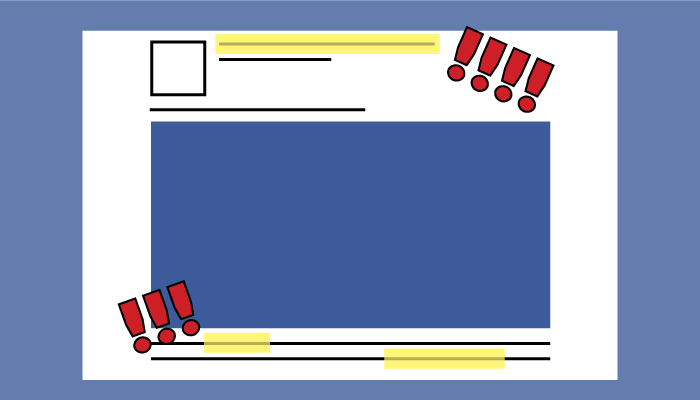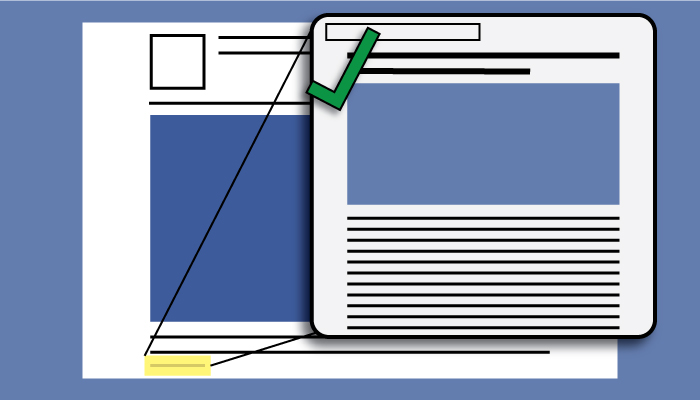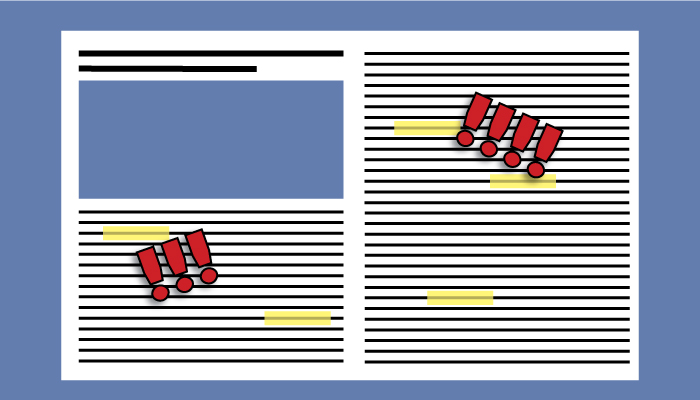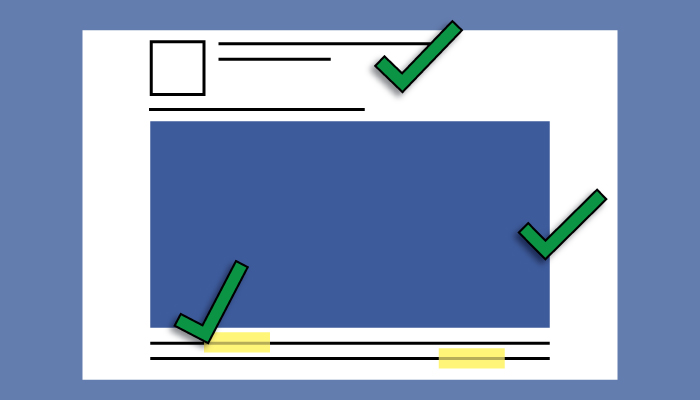How to Spot Fake Facebook News
Much has recently been made about the phenomenon of “fake news.” And while it has now infiltrated political news, Mormons have been dealing with fake news for much longer.
While Facebook offers new ways for fake news to proliferate like never before, fake news has circulated through email chains, home teaching visits, and sacrament meeting talks for many years.
Here are Mormon Hub’s four ways to check if news, particularly LDS-related news, is trustworthy.
Look at the Context

When you see a piece of news online, you’re going to want to look at the context of that article to get a good idea for how reliable it is.
1. Do a simple Google search with keywords from the story. If the story is only found on one site, that’s one sign it isn’t legitimate. Now, being the first news outlet to break a story is a sign of a good news operation, so that by itself isn’t enough to say the story isn’t legitimate, but it’s a start.
2. Does the website have an editorial team? How many writers work for the site? Look on the about us page, or a contact us page to see some of the people behind the site. An editorial team and a large team of writers are a good sign of a legitimate site. But by itself, it isn’t a fool-proof answer. One-person blogs can often pick up a scoop, and large sites can sometimes share the same blind spot.
3. Go to official sources. What is the article about? If it’s related to the Church go to the Mormon Newsroom. But the purpose of official sites isn’t usually to break new stories, so sometimes a legitimate story will not yet be addressed on an official site.
Look at the Source

Look at the website where you are getting the news. And if the news has been reported in multiple places you can apply this analysis to each of those pages.
1. Look at the other articles on the site. Sometimes satirical sites will post one story that sounds too close to the truth and deceive many people. But if you read their other articles the site’s purpose becomes clearer.
2. Does the site have a contact us page? Every legitimate news site will have a way that you can get in contact with the writers or editors. One sure fire way to know a site is illegitimate is if you can’t contact them.
3. Look at the area around the article, what are the advertisements for? Most legitimate sites are concerned about the image their advertisements give them. If the advertisements are largely scantily-clad women it could be a red flag.
4. Look up at the URL bar on the website. If you found the article on mobile you may need to purposely scroll up to see the domain name of the site. Look at two things. First, the URL of the site. If it is site name that similar to a larger site it could be a sign you’re trying to be tricked. Second, look for the top-level domain (TLD) name. This is the .org or .edu part of the site. Most websites you will read news on, both legitimate and fake, will be .com. Websites with .org, .edu, .net are also very common and don’t tell you a lot about the site’s legitimacy. But more rare TLDs such as .co or .ru are a good sign the site isn’t legitimate.
5. The best way to make sure that your news is legitimate is to go directly to the web pages of news sites you know to be legitimate. When it comes to LDS news, outside of the Mormon Newsroom, the Deseret News and Salt Lake Tribune are both trustworthy newspaper style sites. Trustworthy magazine style sites include Mormon Hub, Meridian Magazine, and LDS Living.
Look at the Article

Often times you can suss out the reliability of the article by looking at the sources within the article itself.
1. Look up the people and places in the article. If an article cites someone who is not a public figure, conduct a quick Google search on that person. While finding that they are real does not guarantee a story to be true, finding out there is no person with that name in that field is a pretty sure sign it’s a fake news story.
2. Conduct a reverse image search. One common technique of fake news sites to give their article the semblance of legitimacy is to include a picture. But pictures are often taken from legitimate articles and given different stories. Right click on the photo, and select “Open Image in New Tab,” copy the URL of the page with the image. Then go to a reverse image search site like Tineye, and paste that URL. The site will search the internet to find all the instances of the picture. If you find that picture used with different accompanying news stories, it’s a good sign the more recent one is illegitimate.
3. Look at the date on the article. This doesn’t necessarily tell you whether or not the story is fake, but it can give you important context about how important a story is. Stories several years old can be reshared and then sound much more controversial than they were when they were first released. And even some legitimate sites post completely false news on April 1st. Check if the date is April 1, before accepting an outlandish story as true.
4. Be a critical thinker about the story. Ask yourself if this story is purposely manipulating your emotions. If the story makes you very angry, or very satisfied, there’s a good chance it’s been written specifically to elicit that response from people like you. How important is the news in the story? The bigger or more outrageous the story, the less likely one small internet blog is the only one to have it if it’s legitimate.
Look at Fact Checks

There are many organizations devoted to educating people about fake news stories. Using them can be an important tool.
1. Fact checkers come with their own set of biases. Avoid only looking at a fact checkers gimmicky rating system without reading the accompanying story. Fact checkers are often biased in the stories they choose to rate, and their bias often comes out in stories where they are rating a degree of truth. But when a fact check site does choose to review a story, and they declare it entirely false, it is likely a reliable conclusion.
2. For LDS-specific stories there aren’t as many fact-checking organizations, which is why the other tips are so important. But there are some. Mormon Hub will occasionally run fact checks of false stories trending on social media. Holy Fetch no longer posts often, but they have a fantastic archive debunking many Mormon myths, and even confirming a few surprising ones. The Church also has its own debunk report called the “Spurious Materials Report.” None of these fact checks provide regular updates, so just because a story is missing does not guarantee it’s truth. But it can be a good way to confirm a story is false.
The key is looking at these clues together. A one man blog isn’t likely to have breaking news that isn’t reported anywhere else. If a story has been reported on many sites, but the majority of them don’t have editorial teams, perhaps the story is fake.
These techniques are intended to be used together to help you get a better picture of whether or not the news you are reading on social media can be trusted.


